Known for its oranges, Moorish architecture and flamenco dancing, Andalusia (in Spanish Andalucía) is the autonomous community with the largest number of co-operatives in Spain (over 4,000), in which the most employment is generated (59.000 jobs).
On 21 June I joined other ICA General Assembly delegates on a short trip to two Andalusian co-ops. The tours were organised by COCETA, the Spanish confederation of worker co-ops.
We left Seville at 9am, and despite it being a hot, dry summer day, the temperature was only a little over 20° C when we set off.
One of the greatest advantages of attending events in person is being able to meet co-operators from around the world. While on the coach I got to catch up with old friends and make new ones.
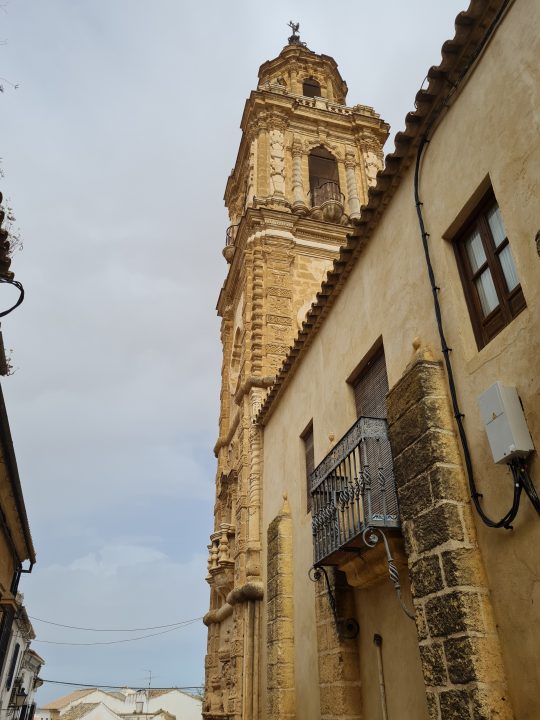
The first stop was the Social Economy School (Escuela de la Economia Social) in Osuna, a town and municipality in the province of Seville. By the time we reached the school the temperature had reached +30° C.
Here we were welcomed by Francesco Garcea, the training and projects coordinator of the school. In line with Spain’s coffee culture and great hospitality, we were offered coffee and refreshments before proceeding with the visit.
Mr Garces told us about the history of the building where the school is based – a beautiful 17th century former abbey, which served as military quarters for Napoleon’s army when it invaded Spain, before becoming a hospital.
By the ‘90s the building was abandoned but Faecta, the Andalusian federation of worker co-ops, has since restored it and secured the local council’s permission to use it over the next 50 years. In order to benefit the region, Faecta established a school for the social economy school for businesses in the area.
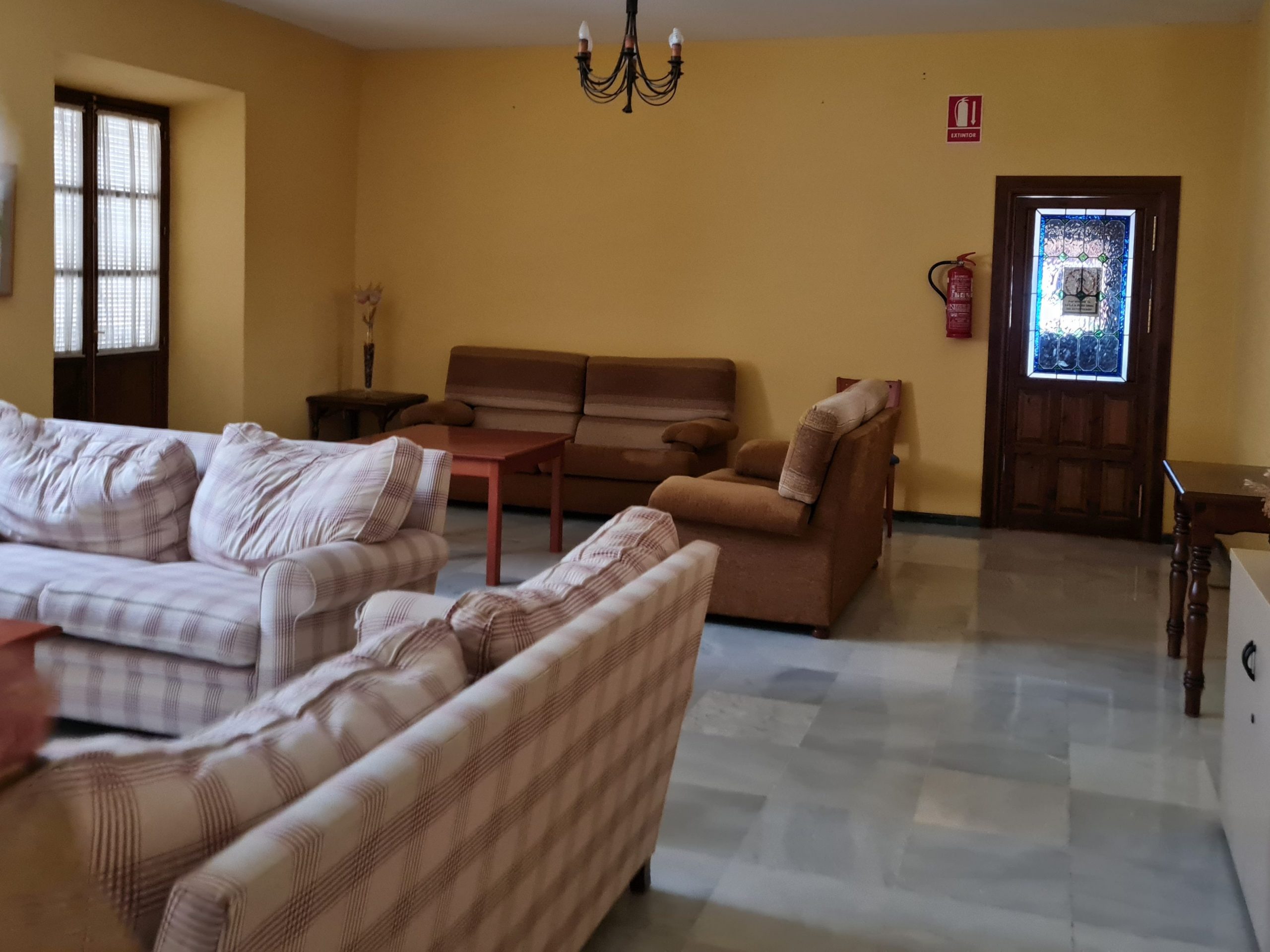
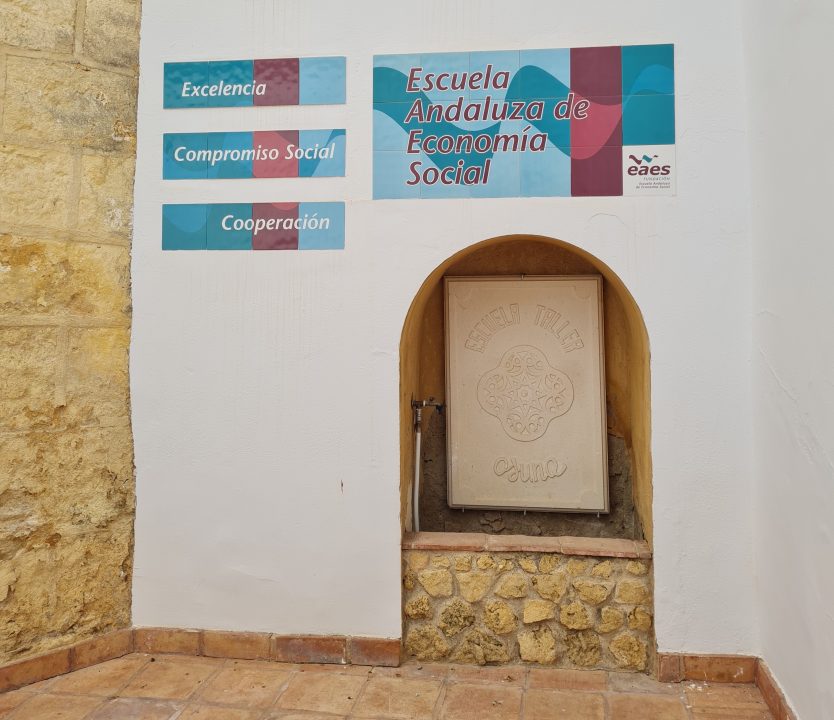
“This year we are celebrating our 20th anniversary,” said Mr Garcea. Since being set up, the school expanded to provide courses for co-operators in other regions and countries.
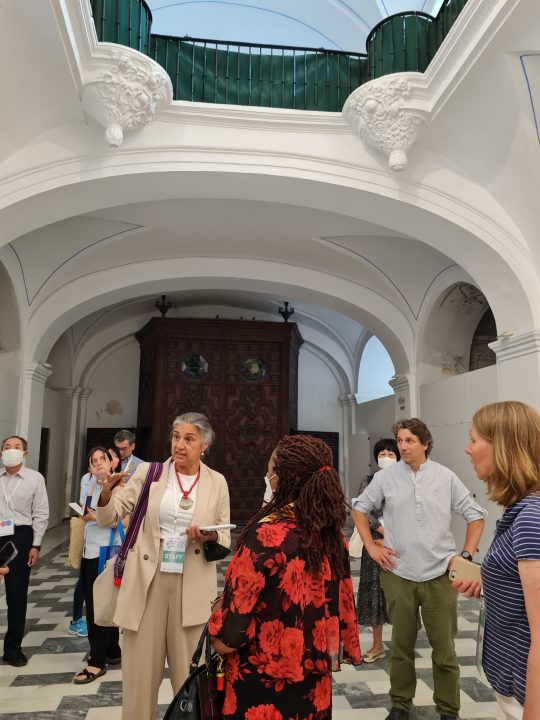
They provide training for directors and professionals from co-ops and the wider social economy, support entrepreneurs who want to set up co-ops via a six-month incubator programme, campaign to raise awareness of the social economy via a range of events, and advocate for the sector.
The school also places a strong emphasis on people sharing common spaces and exchanging opinions and experiences.
“We believe in social learning, in addition to having a great team of trainers and educators, what makes a difference is having people on the school premises while they study here. We believe that people learn from one another when they are together,” Mr Garcea told us.
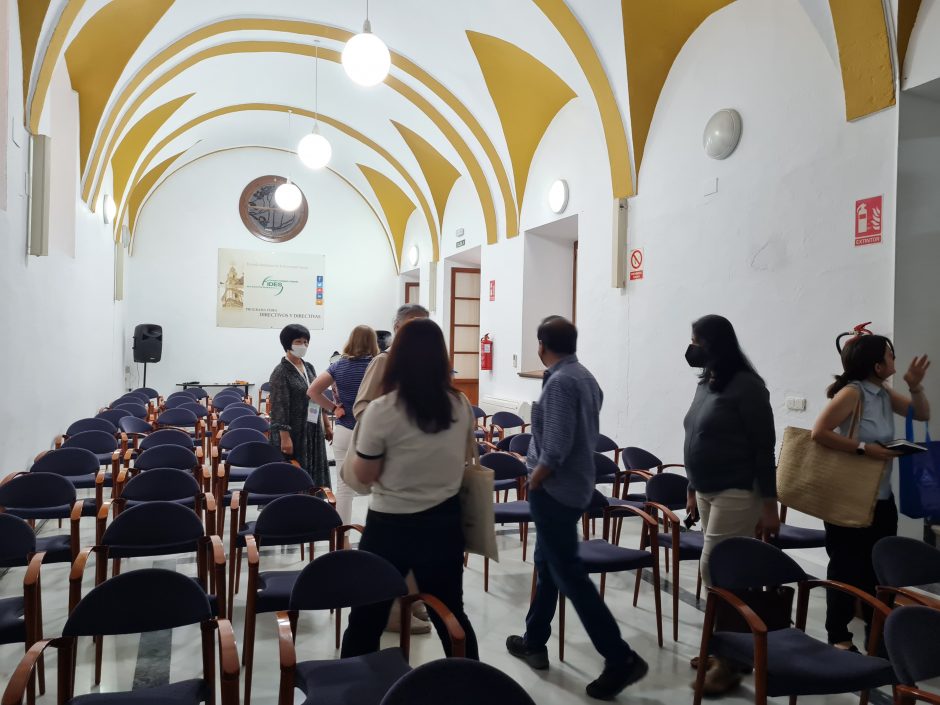
As an important community space for the village, the school also hosts various events, by local groups, social economy actors or political parties.
The school is run by the Andalusian School of Social Economy Foundation, whose trustees include representatives of the co-operative and social economy sector.
With time being limited we were not able to stay in Osuna for too long. We were soon back on the coach making our way to the Al Jarafe College in Mairena del Aljarafe, a municipality in the province of Seville.
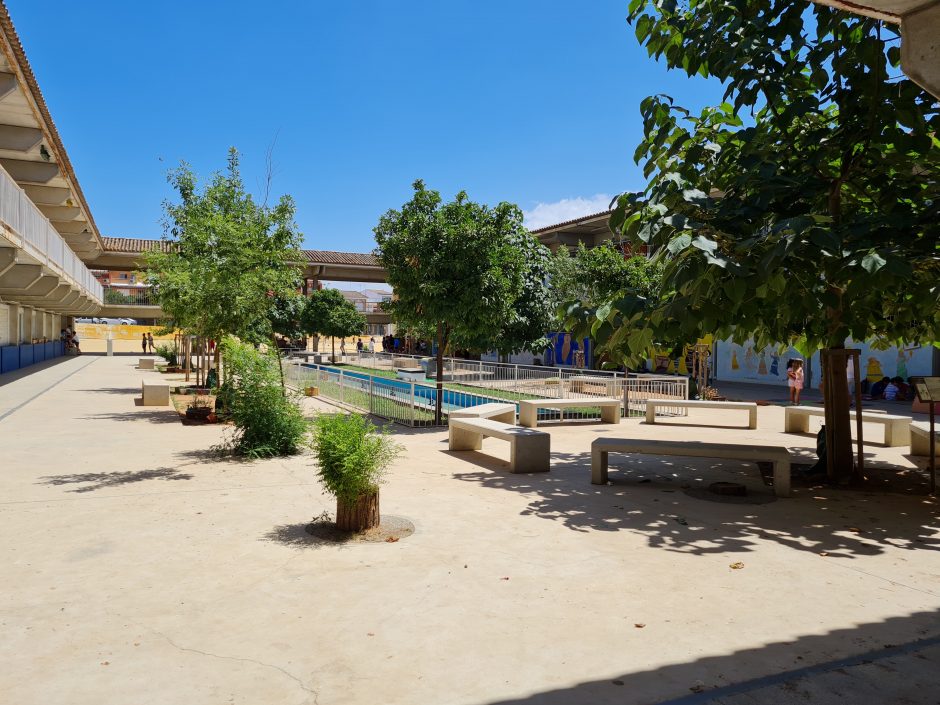
Established in 1970, the college is run by a workers’ co-operative owned by its teachers and employees. It has over 2,000 students and it operates based on three main pillars – sustainability, historical memory and pedagogic innovation.
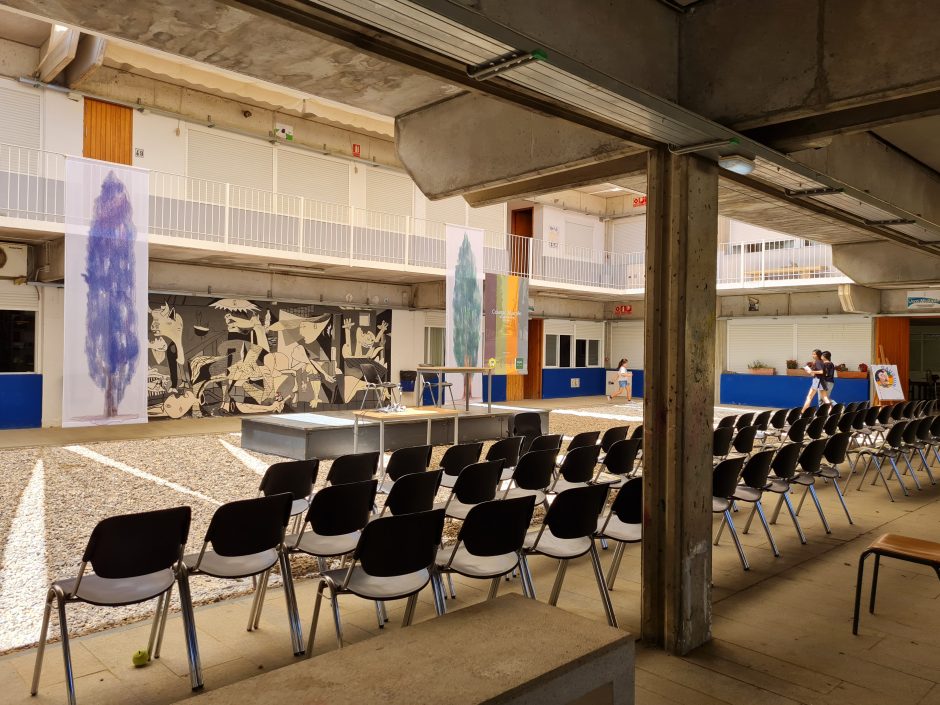
This includes educating pupils on the meaning of freedom, looking at the country’s past and Franco’s regime and seeking to form adults that will change the world.
“We think that this is the best thing we can give to them – developing their critical thinking,” said one of the teachers at the college who showed us around.
Another distinctive feature of the college’s pedagogic style is its emphasis on open spaces – the building in which it is based was designed by architect Antonio Miró in such a way to ensure all classes are in open spaces, including via an open space amphitheatre.
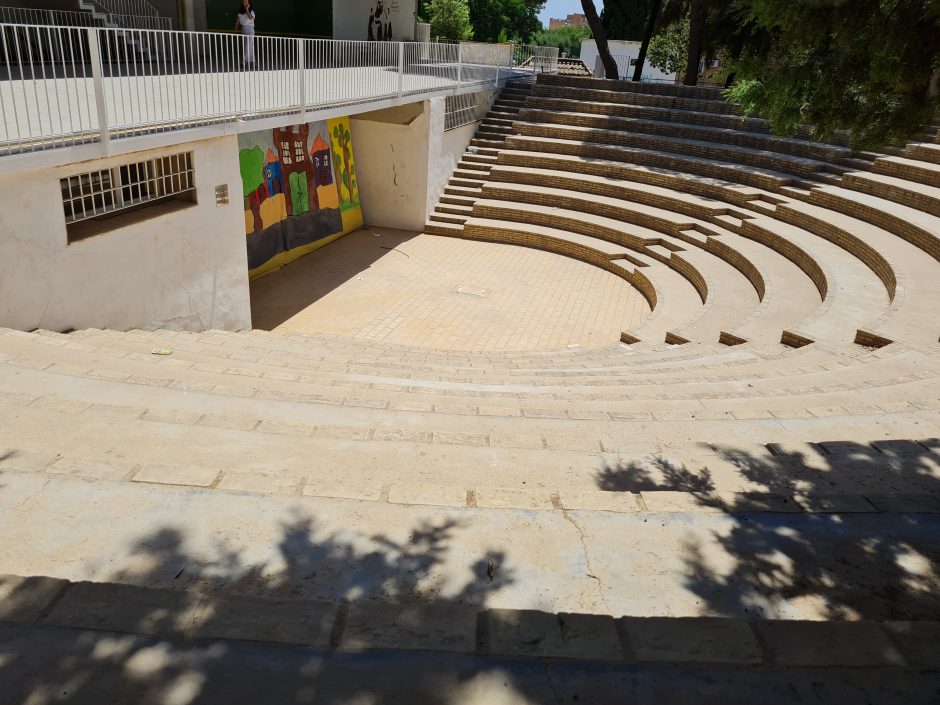
Sustainable initiatives include plating trees and installing solar panels.
Pupils get involved in deciding what interests to pursue and teachers help them achieve their ambitions by designing classes that suit them. They are also given books, learning materials and stationary supplies, which they have to share. In doing so, they learn to work together and manage supplies. Courses include drama, painting and music classes.
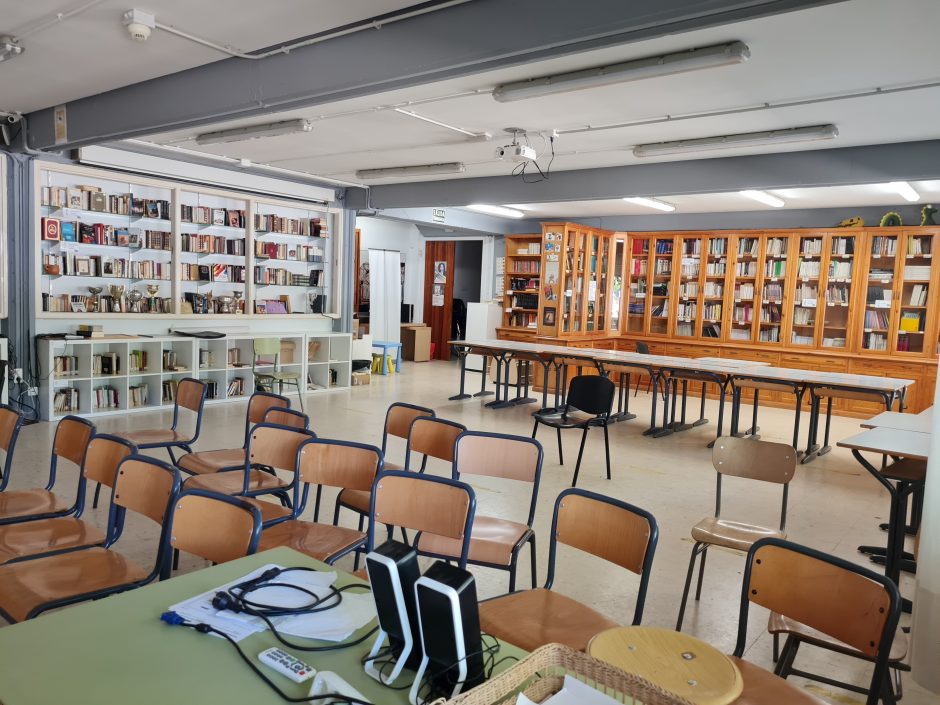
The co-operative employs 70 people, 58 of whom are members. Any teachers can join if they pass a selection process.
Meanwhile, surpluses are reinvested into the school for the benefit of the local community.
Parents do not have to pay a fixed tuition fee but instead contribute as much as they want to the school. This enables those from less well off families to also study at the school. The college has students of different backgrounds, bringing together those from disadvantaged areas and those from affluent neighbourhoods.
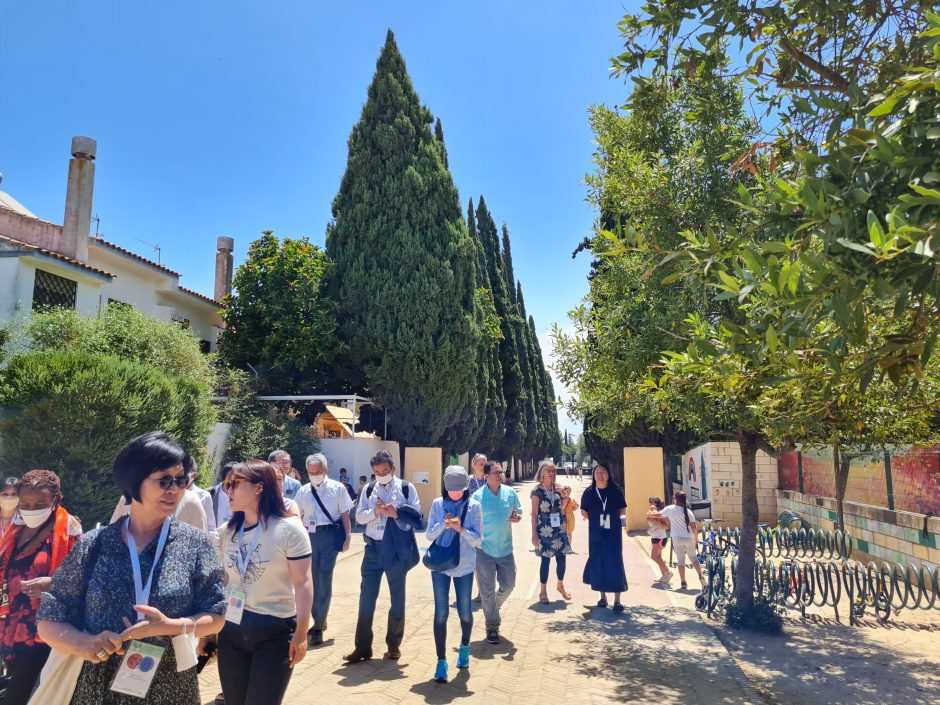
Some funding comes from the government, who pays for the teachers’ salaries. The college also runs its own foundation, through which it is able to attract additional funding. And there is an association of parents, which also makes donations.
Another way the co-op is trying to attract money is by holding events – it recently organised a jazz festival, which attracted the attention of local personalities.
With pupils starting at the school at the age of three, the college plays a key role in forming them, particularly those who choose to stay with the school until they are 18.
The college is just one of Andalusia’s 245 co-operative schools.
Our visit ended with a tour of the classes and common areas, following which we got back on the coach – this time heading to the conference venue.
The visits were an eye-opening experience – they showed us what can be achieved when there is a strong co-operative culture and support from the local co-operative movement.